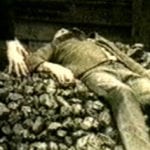 Technology
Technology  Technology
Technology  Misconceptions
Misconceptions 10 Hilarious (and Totally Wrong) Misconceptions About Childbirth
 Weird Stuff
Weird Stuff 10 Warning Labels That Exist Because Someone Actually Tried It
 Health
Health Ten Confounding New Inventions from the World of Biomedicine
 Creepy
Creepy 10 Death Superstitions That Will Give You the Creeps
 Movies and TV
Movies and TV 10 Movies That Get Elite Jobs Right, According to Experts
 Weird Stuff
Weird Stuff 10 Times Real Laws Were Based on Bizarre Hypotheticals
 Animals
Animals 10 Inspiring Tales of Horses Being Human
 Mysteries
Mysteries Top 10 Haunting Facts About the Ghost Ship MV Alta
 History
History 10 Surprising Stories About the Texas Rangers
 Technology
Technology 10 Awesome Upgrades to Common Household Items
 Misconceptions
Misconceptions 10 Hilarious (and Totally Wrong) Misconceptions About Childbirth
 Weird Stuff
Weird Stuff 10 Warning Labels That Exist Because Someone Actually Tried It
Who's Behind Listverse?

Jamie Frater
Head Editor
Jamie founded Listverse due to an insatiable desire to share fascinating, obscure, and bizarre facts. He has been a guest speaker on numerous national radio and television stations and is a five time published author.
More About Us Health
Health Ten Confounding New Inventions from the World of Biomedicine
 Creepy
Creepy 10 Death Superstitions That Will Give You the Creeps
 Movies and TV
Movies and TV 10 Movies That Get Elite Jobs Right, According to Experts
 Weird Stuff
Weird Stuff 10 Times Real Laws Were Based on Bizarre Hypotheticals
 Animals
Animals 10 Inspiring Tales of Horses Being Human
 Mysteries
Mysteries Top 10 Haunting Facts About the Ghost Ship MV Alta
 History
History 10 Surprising Stories About the Texas Rangers
10 Chilling Murder Mysteries From Around The World
Murder has always been a global problem. There seems to be no place on Earth where people can avoid the corruption of anger, greed, or pure sadism to the point where they would not kill their fellow humans.
Today, we are looking at murder mysteries with an international flavor. All these crimes are decades or even centuries old. The chances of ever finding out the truth about them are very slim, but who knows? Maybe they’ll be featured one day on a new list about cold cases finally solved after years of waiting.
10 The Family Murders
Australia

In the late 1970s and early ’80s, five young men were murdered in Adelaide. They had all been tortured, sexually assaulted, and mutilated before having their remains dumped in remote parts of the city.
The gruesome similarities between the crimes convinced authorities that they had been committed by the same person or persons. It soon became the working theory that a group of people was responsible for the murders. After a police interview, the group became known as “The Family.”
With little progress made in the way of arrests, rumors soon sprang up that “The Family” was a powerful pedophile ring which contained high-profile members from Adelaide’s elite.[1]
Only one killer was identified. An accountant named Bevan Spencer von Einem was convicted in 1984 of the murder of 15-year-old Richard Kelvin, the last of the slayings attributed to “The Family.” Von Einem was suspected of involvement in the rest of the killings as well as other infamous Australian crimes like the disappearance of the Beaumont children.
Von Einem alluded but never admitted to the existence of “The Family.” He refused to name names out of fear for his life.
9 The Square Mile Of Murder
Scotland
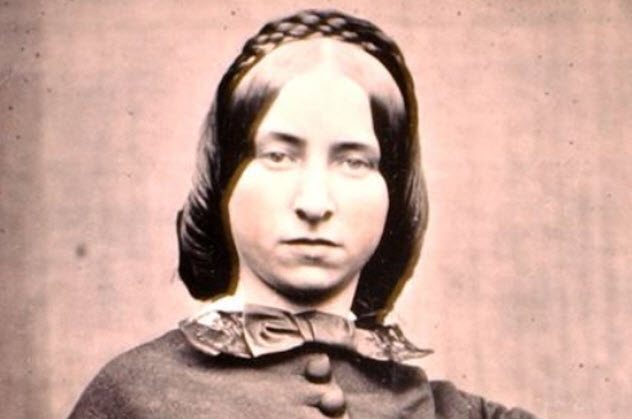
In 1961, Scottish author Jack House wrote The Square Mile of Murder. It covered four of Glasgow’s most infamous crimes which took place in the same square mile area over a period of 50 years between 1857 and 1908.
First was the case of Madeleine Smith. She was a socialite who was accused of poisoning her lover in 1857. Although most scholars who studied the murder believe that Madeleine was guilty, the jury at her trial gave a verdict of “not proven,” meaning she was acquitted due to insufficient evidence.[2]
Afterward came the Sandyford murder of 1862. Servant Jessie McLachlan was convicted of killing another housemaid named Jessie McPherson. However, a separate commission investigated the evidence in the trial and commuted her sentence from hanging to life imprisonment.
In 1865, Dr. Edward William Pritchard was executed for the murders of his wife and mother-in-law. He was also suspected of having killed a servant girl a few years earlier. The last and certainly the most famous crime occurred in 1908 when 83-year-old Marion Gilchrist was killed during an attempted robbery. German Jew Oscar Slater was convicted in what was arguably the country’s most notorious miscarriage of justice.
8 The Botanist Killing
Indonesia

Canadian botanist Charles Budd Robinson was born in Nova Scotia in 1871. After holding a few positions both in his native country and in New York, Robinson took a post in Manila. He enjoyed traveling to exotic locations in search of new species of plants, and the numerous islands of Southeast Asia made it easy for him to indulge his passion.
In December 1913, Robinson left on a botanical expedition of Ambon in the Maluku Islands of Indonesia. He was never heard from again. While his ultimate fate remains a mystery, we have an idea of what likely befell him due to a report by Mr. van Dissel, Assistant Resident of Ambon.
He tried to piece together Robinson’s last days by relying mostly on oral accounts. According to van Dissel, the botanist traveled to a remote part of the island where a group of natives mistook him for a headhunter and killed him.[3]
One popular but unsubstantiated legend that arose following Robinson’s death said that he died due to a simple lexicological confusion. Seeing a young boy in a coconut tree, the doctor asked the boy to cut him down a fruit. However, with his poor understanding of the Malay language, Robinson accidentally used the word kepala (“head”) instead of kelapa (“coconut”), which is why the locals thought he was a headhunter.
7 Death Of A Translator
Japan
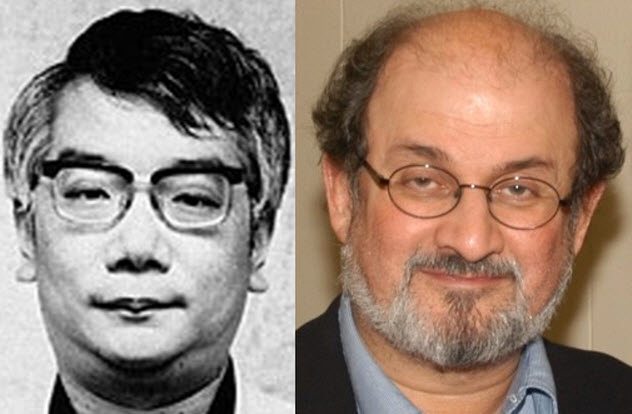
In 1988, Salman Rushdie published The Satanic Verses. The book was scorned by the Muslim world and labeled blasphemous. Iranian Ayatollah Khomeini even issued a fatwa, calling for the death of Rushdie and his publishers.
This was no empty threat. There were several attempts on the author’s life. His Norwegian publisher, William Nygaard, was shot three times but pulled through. The Italian translator, Ettore Capriolo, was stabbed in his apartment but also survived.
Hitoshi Igarashi was a 44-year-old assistant professor of Islamic culture at Tsukuba University. In early 1990, he translated The Satanic Verses into Japanese and was killed for it a year later. Igarashi’s body was found on July 13, 1991, by the cleaning lady in the hallway of his campus building. He had been cut on his hands and face repeatedly and had a deep wound in his neck.[4]
The murderer left behind footprints and stains of type O blood, but that was not enough to identify him. Technically, a link has never been established between Igarashi’s translation of Rushdie’s book and his murder. However, given the timing and circumstances, most assumed that there was a connection.
A 2005 update on the case mentioned that the police weren’t any closer to solving the murder even though they still had a task force in place investigating the scholar’s slaying. Back then, Japan had a 15-year statute of limitations on murder, so even if authorities identify the killer, he is now beyond the reach of the law.
6 Murder In The Woods
Wales
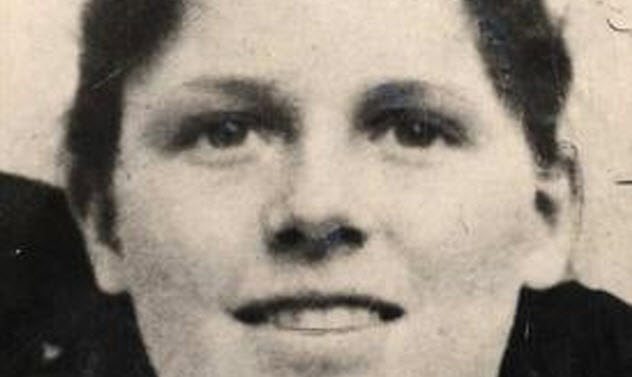
On June 27, 1946, 12-year-old Muriel Drinkwater was returning home from school, following the path to her house which passed through the woods of Penllergaer in Swansea. She never made it out of the forest. Her body was found the next day. She had been beaten, raped, and shot twice in the chest.
The murder weapon was found a few days later. It was a World War I–era Colt .45, American army issue pistol with a modern Perspex grip. There was also a description of a suspect—a 30-year-old man with “thick, fluffy hair and wearing brown corduroy trousers and a light brown sports jacket.” Despite the leads, the killer remained unidentified.[5]
Over 60 years later, investigators finally found a solid lead thanks to modern forensics. In 2008, they were able to extract a DNA sample from a semen stain and construct a DNA profile. There was no match in the national database, so now it has to be compared individually to 40–50 men targeted in the original investigation or, more likely, their surviving relatives.
While the killer’s identity still eludes us, DNA testing was able to clear 75-year-old Hubert Hoyles, who was 13 at the time of the murder. Many people suspected Hoyles as he was the last person to see Muriel alive. He described the recent finding as a “heck of a relief” after the murder “blighted” his life.
5 Murder Of A Mathematician
Netherlands
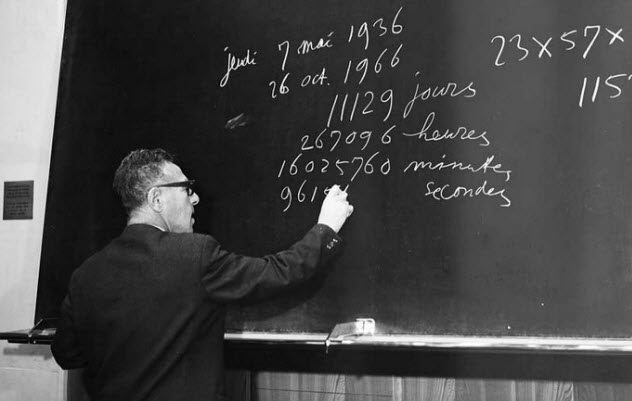
Dutch mathematician Willem “Wim” Klein was noted for his remarkable feats of mental arithmetic, earning him the moniker of “The Human Computer.” Born in Amsterdam in 1912, he first developed his skills of lightning-fast calculations into a circus act which he performed throughout Europe.
During the 1950s, he worked as a scientific calculator as he was much quicker and more reliable than computers of the day. In 1958, Klein was employed by CERN and moved to Switzerland, where he stayed for almost two decades.
Wim retired in 1976 and moved back to Amsterdam. He kept doing performance shows and focused on breaking records. That same year, Klein entered the Guinness Book of Records for calculating the 73rd root of a 500-digit number in two minutes and 43 seconds.
Willem Klein was murdered on August 1, 1986. His housekeeper found “The Human Computer” in his home, dead from multiple knife wounds.[6] Although a young man was soon arrested for the crime, he was eventually released due to lack of evidence. The killer was never identified. Some believe that Klein was killed because he was gay, while others opined that it was a botched robbery.
4 The Crewe Killings
New Zealand

Husband and wife Harvey and Jeanette Crewe were last seen alive on June 17, 1970. A few days later, Jeanette’s father, Lenard Demler, visited their farmhouse in Pukekawa. He found their infant daughter, Rochelle, crying in her cot, and the house covered in bloodstains.
Jeanette’s body was found two months later and Harvey’s a month after that. They had both been shot with a .22 caliber firearm and dumped in the Waikato River. But the husband had been weighted down with a car axle, which is why he was harder to find.[7]
Police first suspected a murder-suicide but quickly dismissed the idea. Afterward, they shifted their focus toward Len Demler. He exhibited strange behavior and had a financial motive—Jeanette had inherited half of his farm and wanted to buy him out. However, investigators couldn’t find any solid evidence connecting him to the murders.
Next up came a neighbor named Arthur Allan Thomas. He was actually charged and convicted of the crimes in 1971 and again in 1973 during a second trial. There was just one problem, though. He had been framed by two detectives who had planted evidence.
Thomas was pardoned in 1979. But the officers were never charged, and nobody else was arrested for the double murder.
3 The Battersea Flat Murder
England

Thomas Weldon Atherston (real name Thomas Anderson) was a stage actor who met a curious demise in London’s Battersea district on July 16, 1910. After reports of gunshots, police came to investigate the area and found Atherston’s body on the grounds of Clifton Gardens. He was wearing bedroom slippers and carrying a rudimentary blackjack in his pocket. He had died from a bullet wound to the face.
Investigators talked to the tenant of the apartment, a woman named Elizabeth Earl. She happened to be Atherston’s ex-girlfriend and reported hearing gunshots while having dinner with a young man named Thomas Frederick Anderson. He happened to be the actor’s son and was currently in a relationship with his father’s former lover.[8]
Given the circumstances, police didn’t believe that Atherston’s death was a coincidence. They investigated the possibility of a murderous love triangle where the young Anderson and his lover conspired to kill the older actor.
Several other witnesses claimed to have seen a man fleeing the scene, but none could describe him. While he could have been Anderson, there was no evidence to indicate this as the lovers gave each other alibis.
Although no culprit was arrested, police believed that Atherston was in the wrong place at the wrong time. While lurking in the shadows and spying on his former mistress, he encountered a burglar who shot him to make his getaway.
2 The Death Of Sharron Prior
Canada
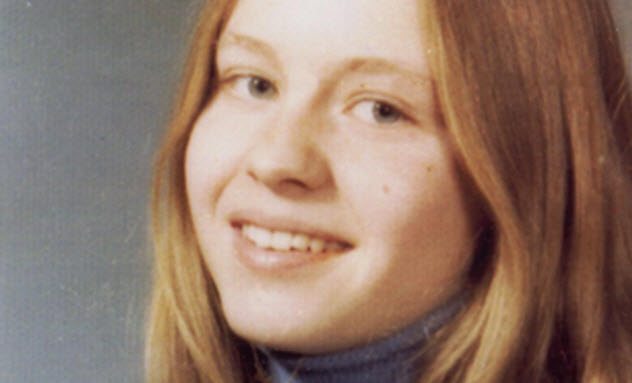
On March 29, 1975, 16-year-old Sharron Prior left her home in Montreal to meet friends at a diner. It was a short walk, but that was the last time her family saw her alive.
Sharron’s body was found days later in a beekeeper’s field. She had been raped and severely beaten. There were some branches clumped in her hand, suggesting that she was still alive when she was dumped in the field.[9]
Right before Sharron’s disappearance, another woman was assaulted by a man with a knife in the same area. However, she screamed for help and several people rushed to her rescue, scaring her assailant away. Some have speculated that it was the same man and that he ran into Sharron while making his getaway. She then became a target of opportunity.
Another hypothesis stated that there were two perpetrators. This was due to evidence left at the scene—a footprint and a man’s shirt, probably used to bind Sharron.
Although the footprint was size 8-1/2, the shirt belonged to a bigger man, somewhere around 183 centimeters (6’0″) and 90 kilograms (200 lb). The measurements matched the description of the other woman’s attacker. So it could be that the larger culprit was the abductor and the smaller accomplice dumped the body.
1 The Wonderland Murders
USA

The Wonderland murders had sex, drugs, and lots of violence—the perfect recipe for one of the darkest moments in Hollywood. During the 1970s and early ’80s, one of several groups getting rich from Los Angeles’ thriving cocaine trade was the Wonderland Gang.
However, the pack met a sudden and brutal end on July 1, 1981, when three of its members and an associate were gruesomely killed in their drug den in the Hollywood Hills.
Allegedly, the killings were retaliation from nightclub owner and drug trafficker Eddie Nash. Prior to this, the Wonderland Gang had robbed his home, making Nash beg for his life and wounding his henchman, Gregory Diles, with a grazing shot. Also possibly involved was notorious porn star John Holmes.
According to the story, Holmes helped the Wonderland Gang rob Eddie Nash by going to his house earlier in the day and leaving the sliding door open. Afterward, the mobster realized Holmes’s involvement and made him give up the location of the robbers. The porn star was charged with the murders in 1982. Nash and Diles were charged in 1990, but all three were acquitted.
In 1988, after Holmes died, his ex-wife came forward, saying that John had confessed his involvement to her. He had taken three thugs to the drug den on Wonderland Avenue and watched them bludgeon the robbers to death. Holmes didn’t name any of the assailants.[10]
Read about more chilling murder mysteries on 10 Historical Murder Mysteries Still Waiting For An Answer and 10 Haunting Small-Town Murder Mysteries.


